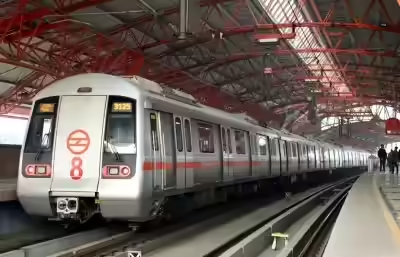Overview of the Fare Increase
The Delhi Metro Rail Corporation has implemented a fare increase that took effect on Monday. This adjustment has sparked conversations among commuters regarding how pricing variations impact daily travel.
Details of the New Fares
The fare adjustments announce a hike ranging from Rupees 1 to 4, depending on the distance traveled. Here’s a breakdown of the updated fare structure:
| Distance (km) | Old Fare (INR) | New Fare (INR) |
|---|---|---|
| 0 – 2 | 10 | 11 |
| 2 – 12 | 30 | 32 |
| 12 – 21 | 40 | 43 |
| 21 – 32 | 50 | 54 |
| More than 32 | 60 | 64 |
In addition to regular days, fares have also increased for journeys on Sundays and national holidays. The new fare structure aims to maintain operational sustainability while providing an affordable public transit option for commuters.
Impact on Passengers
The recent fare adjustment has raised eyebrows among regular users. Many commuters rely on the Delhi Metro as a primary mode of transport, and even marginal increases can influence their daily expenses. However, the Metro’s management characterized this hike as minimal, emphasizing their commitment to offering economical and reliable transit services.
Airport Express Line Adjustments
Moreover, the Airport Express Line has also seen a fare increase of up to INR 5. This line is crucial for people traveling to and from the airport, making affordability especially important. Passengers are left balancing their options between increased fares and the reliability of services.
Reasoning Behind the Increase
The Delhi Metro Rail Corporation has cited various operational costs as reasoning for the fare hike. Running a metro system involves significant costs that require constant evaluation. The Metro’s efforts aim to strike a balance between operational efficiency and rider affordability.
The Bigger Picture
As fare adjustments ripple through public transport, individuals who regularly rely on taxis or private vehicle hires might feel an impact as well. As some switch their transport preferences due to fare increases on the metro, there may be increased demand for taxi services. Having better alternatives is essential for commuters who want both reliability and cost-effectiveness.
Looking Ahead
Commuters accustomed to the Delhi Metro system might need to adjust their budgets and expectations moving forward. These fare changes not only affect daily passengers but could also lead to a broader analysis of public transport fares across the region.
Considerations for Commuters
Commuters will need to keep several factors in mind when considering their transport options, particularly if they are considering alternatives such as taxis:
- Travel Costs: Understanding how new metro fares compare with taxi prices can clarify budget adjustments.
- Time Efficiency: Real-time arrival and departure times may influence the choice between metro travel and taxis.
- Convenience: Some may prefer the flexibility and direct travel offered by taxis over public transit schedules.
Final Thoughts
In conclusion, the fare increase presented by the Delhi Metro Rail Corporation highlights the ongoing balance between operational costs and commuter convenience as public transport evolves. As riders adjust to these new price points, services like LocalsRide can offer viable alternatives for those seeking personalized, user-friendly transport solutions around the city. With LocalsRide, travelers can choose their vehicles, gain access to transparent pricing, and ensure a journey tailored to their needs without the worry of fluctuating fares.
The changes implemented may seem small, but even the best evaluations and most transparent information do not substitute for personal experience. By using LocalsRide, you can hire a car with a verified driver, ensuring you control your travel plans without unnecessary expenses. Experience the convenience, affordability, and extensive vehicle options available at LocalsRide. Start planning your next adventure and secure your worldwide transfer with LocalsRide. Book your Ride on LocalsRide.com.

